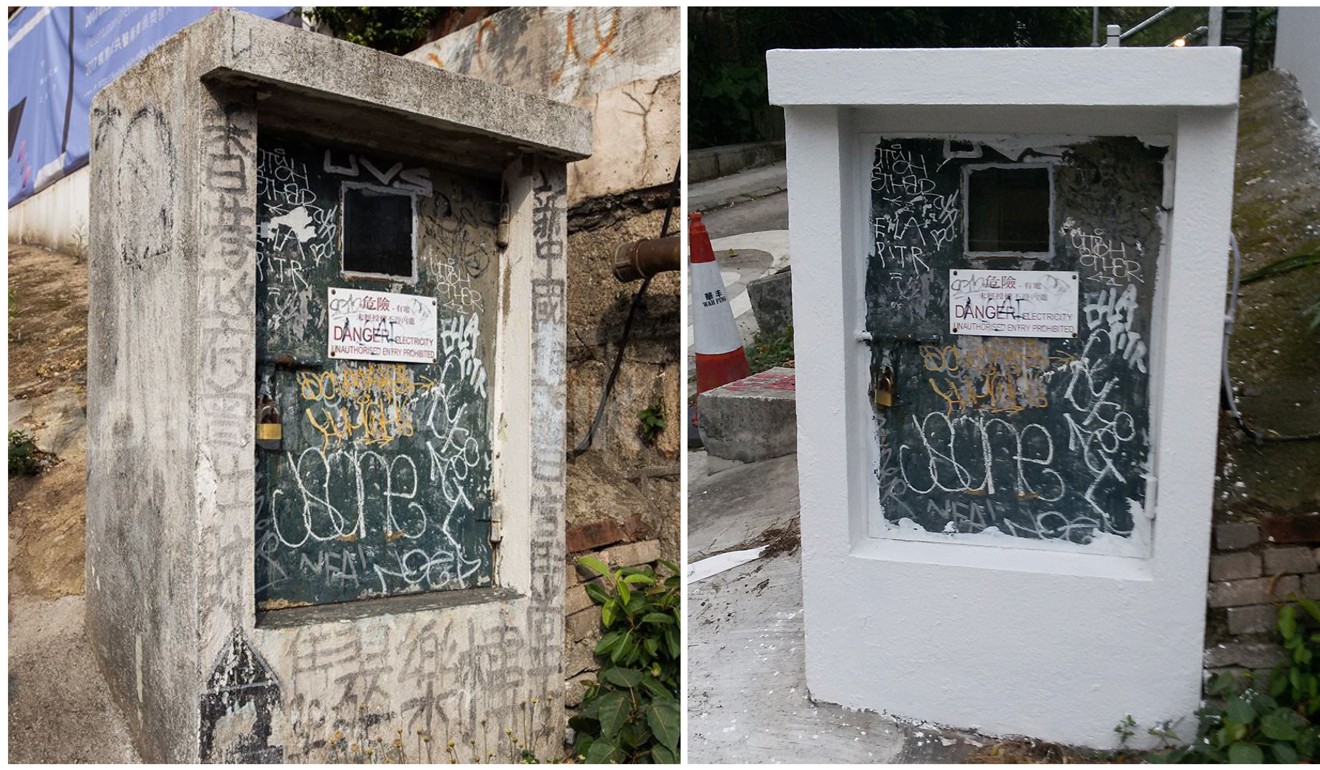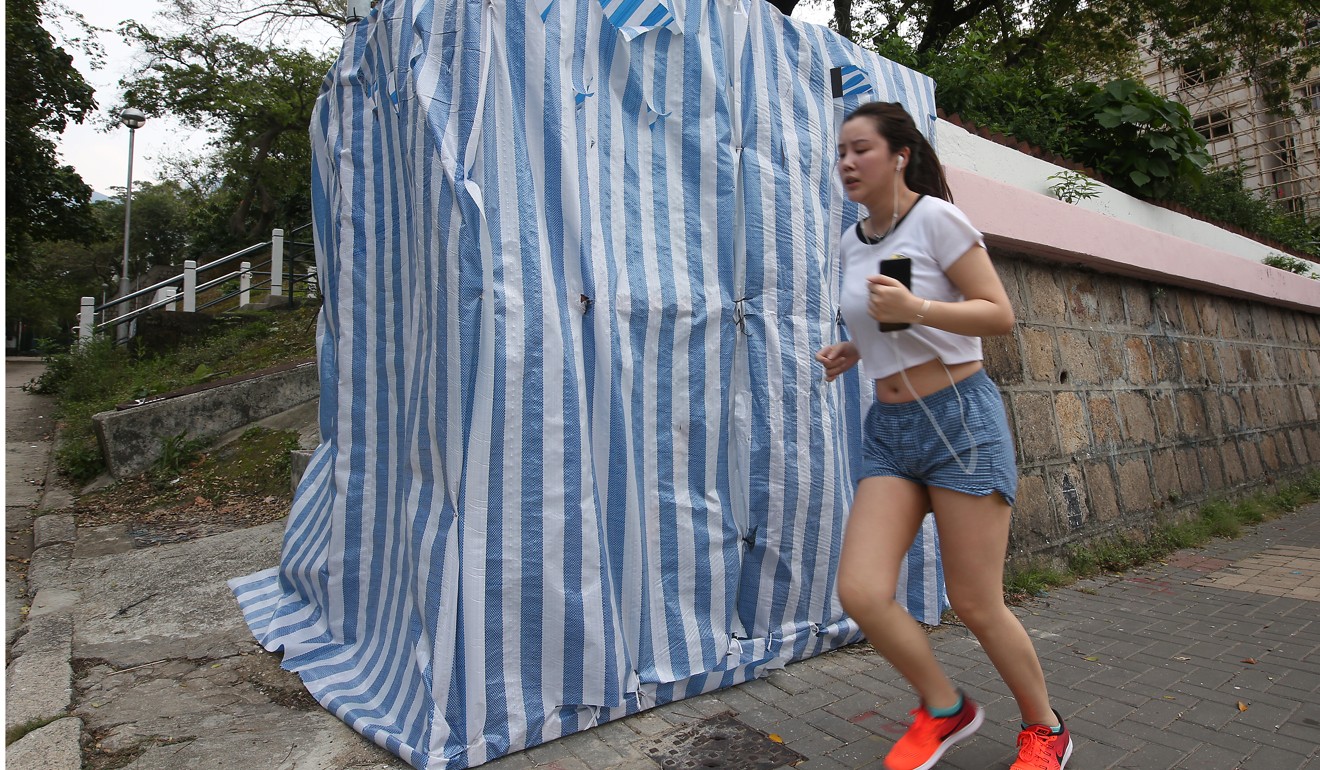
Hong Kong artist King of Kowloon’s prized graffiti wiped out in salvage mission
Contractors removing paint mistakenly slapped over the King of Kowloon’s creation erase most of his work
Efforts to restore a rare piece of Hong Kong graffiti that was mistakenly painted over last month have left the artwork worse off, according to one avid collector.

“It is understood that the contractor mistakenly covered the calligraphy on the electric box with paint,” a Leisure and Cultural Services Department (LCSD) spokesperson said on Wednesday. “The Architectural Services Department has already followed up on it in accordance with the contract.”
Government contractors then covered the artwork in a tarpaulin before stripping the white paint, but most of the calligraphy was removed during the process, leaving only traces of the original.
Joel Chung Yin-chai, a collector of Tsang’s work, said the restoration may have been done in haste due to public and media pressure. He said the government and the contractor should have taken more time to study the best way to remove the paint without damaging the calligraphy.
“At least they should have [first] known what kind of material the graffiti was before removing the white paint... I think they did this process very unprofessionally,” Chung said.

If no immediate remedy was available, the best option would have been to leave the paint on the switch box, as it would have peeled off over time, he added.
Chung said it was another example of the government “not truly respecting Hong Kong local culture”.
“In 2009 [former Home Affairs minister] Tsang Tak-sing announced a policy to protect the King of Kowloon’s calligraphy. I think [the government] just did it because there was media pressure,” and to quell public anger after Tsang’s street art was found to have been damaged, he said.
“They didn’t set a clear policy or provide information to every department [responsible]. It appears they have tried to avoid this issue.”
Only a few pieces of Tsang’s original calligraphy are protected. One example, on a pillar at Star Ferry Pier in Tsim Sha Tsui, is covered by protective screens.
Chung questioned why Tsang’s other works had not been given the same protections almost a decade after the government said it would help to preserve them.
The LCSD did not reply to the Post’s request for comment.
Tsang was born in Guangdong in 1921 and started to graffiti in the 1950s.
On crutches, he would hobble around the city shirtless and holding a plastic bag of brushes and ink, which he used to write on walls, lamp posts, switch and post boxes across the city.
Claiming his ancestors owned many sites across Kowloon, Tsang dubbed himself the “King of Kowloon” before he eventually died in 2007.

